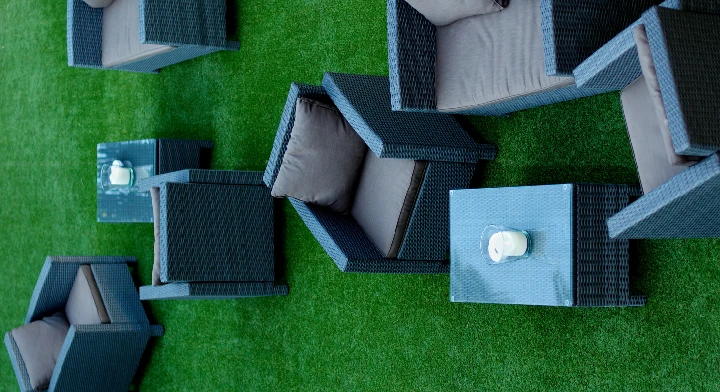
- Afrikaans
- Arabic
- Belarusian
- Bengali
- Czech
- Danish
- Dutch
- English
- Esperanto
- Estonian
- Finnish
- French
- German
- Greek
- Hindi
- Hungarian
- Icelandic
- Indonesian
- irish
- Italian
- Japanese
- kazakh
- Rwandese
- Korean
- Kyrgyz
- Lao
- Latin
- Latvian
- Malay
- Mongolian
- Myanmar
- Norwegian
- Persian
- Polish
- Portuguese
- Romanian
- Russian
- Serbian
- Spanish
- Swedish
- Tagalog
- Tajik
- Thai
- Turkish
- Turkmen
- Ukrainian
- Urdu
- Uighur
- Uzbek
- Vietnamese
synthetic turf
Dec . 13, 2024 01:53 Back to list
Synthetic Turf A Revolution in Sports and Landscape Design
Synthetic turf has gained immense popularity over the years, emerging as a viable alternative to natural grass in various applications, including sports fields, landscaping, and playgrounds. As technology has advanced, the benefits of synthetic turf have become more pronounced, influencing how we engage with outdoor spaces, especially in areas subject to heavy use and unpredictable weather conditions.
The Advantages of Synthetic Turf
One of the most compelling advantages of synthetic turf is its durability. Unlike natural grass, which requires regular maintenance, watering, and mowing, synthetic grass can withstand heavy foot traffic and adverse weather conditions without losing its aesthetic appeal. This makes it an ideal choice for sports fields that host numerous games and practices throughout the season. Synthetic turf surfaces can be used year-round, allowing athletes to train and compete without the disruptions caused by rain or snow.
Moreover, synthetic turf eliminates the need for harmful pesticides and fertilizers, making it an environmentally friendly option. The absence of chemicals not only protects the athletes who play on these fields but also reduces the ecological impact on surrounding areas. Turf made from recycled materials further enhances its green credentials, promoting sustainability through the repurposing of waste products.
Economic Considerations
While the initial installation costs of synthetic turf can be higher than that of natural grass, long-term savings are often realized through reduced maintenance expenses. The cost of watering, mowing, and fertilizing natural grass can add up significantly over time. In contrast, synthetic turf requires only occasional brushing and washing to keep it in pristine condition. This makes it especially attractive to schools and municipalities looking to manage budgets effectively while providing quality athletic facilities.
Aesthetic Appeal and Versatility
synthetic turf

Another major selling point of synthetic turf is its versatility in design and aesthetic appeal. Available in various colors and pile heights, synthetic turf can be customized to fit the specific needs of any project, whether it’s a soccer field, a backyard lawn, or a rooftop garden. This ability to tailor appearance and texture to suit individual preferences allows for creative landscaping solutions that enhance architectural designs and urban spaces.
Additionally, synthetic turf is becoming increasingly popular in residential settings. Homeowners are drawn to its low-maintenance nature, allowing them to enjoy a beautiful lawn without daily upkeep. Families with children and pets benefit from synthetic turf's resilience and safety features, as many products are designed to minimize the risk of injury during play.
Challenges and Considerations
Despite its many advantages, synthetic turf does come with challenges. One significant concern is heat retention; synthetic grass can become notably hotter than natural grass, posing risks during hot weather. Manufacturers are continuously developing new materials and cooling technologies to address this issue. Furthermore, the environmental impact of synthetic turf's production and eventual disposal raises questions about its sustainability. Although many products are recyclable, not all synthetic turfs can be efficiently processed at the end of their lifespan.
Another factor to consider is the potential for injury on synthetic surfaces. While they are designed to mimic the feel of natural grass, the playing experience can differ significantly. There is an ongoing debate about whether synthetic surfaces contribute to a higher incidence of injuries, especially in contact sports. Ongoing research seeks to quantify these risks and inform future designs.
Conclusion
In summary, synthetic turf represents a significant advancement in landscaping and sports facility design, offering durability, sustainability, and aesthetic flexibility. Its benefits can often outweigh the drawbacks, making it an appealing option for various applications. As the technology continues to evolve, synthetic turf is poised to play an increasingly prominent role in how we design, build, and utilize outdoor spaces. Whether on the field, in the park, or in your backyard, synthetic turf is redefining our interaction with the environment, paving the way for innovative solutions to meet modern demands.
-
The Benefits of Artificial Turf for Indoors
NewsJul.15,2025
-
How Artificial Grass Suppliers Ensure Quality Products
NewsJul.15,2025
-
Artificial Grass and Pets: A Space for Relaxation
NewsJul.08,2025
-
Balcony & Outdoor Decoration with Artificial Grass
NewsJul.08,2025
-
Best Indoor Artificial Grass for Home
NewsJul.07,2025
-
Best Pet Turf for Dogs: Safe & Durable Artificial Grass Options
NewsJul.07,2025
Products categories









